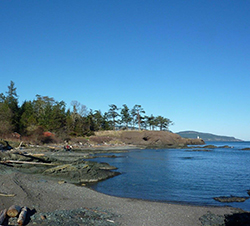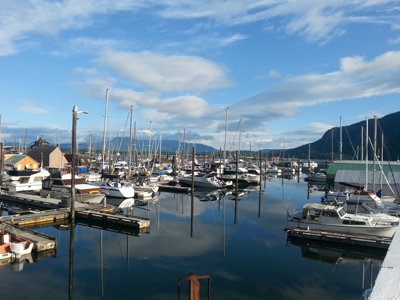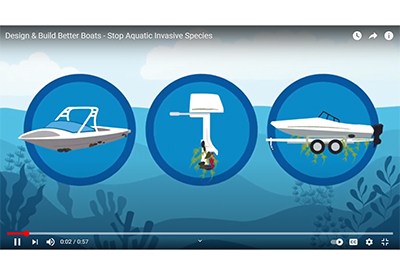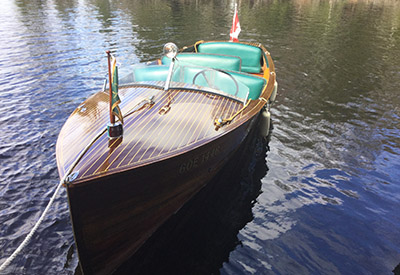Protecting BC’s Gulf Islands
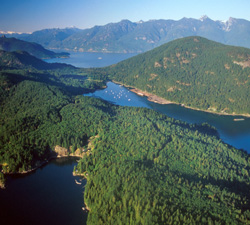
By Christine Rikley
How land conservancies work with property owners and donors to preserve the beauty and diversity of the West Coast’s most popular cruising ground.
Many Canadian Yachting readers have likely experienced the beauty of British Columbia’s Gulf Islands. Nestled between Vancouver Island and the mainland, this archipelago of more than 450 islands and islets offers calm seas, a gentle climate and stunning landscapes. What many visitors may not notice are the immense pressures on this much-loved area and the work of numerous conservation groups to save these fragile ecological jewels for all British Columbians and visitors.
The ecosystems of the Gulf Islands are among the most critically imperiled in BC. The islands hold one-quarter of the province’s Coastal Douglas-fir zone – the ecosystems that give us Garry oak woodlands, rocky headlands bursting with wildflowers, and lush Douglas-fir forests. Over 100 species-at-risk live here, many of which live nowhere else in Canada.
With more than 2.6 million people in the surrounding urban areas, the Gulf Islands have long been a popular holiday destination and their residential population has more than doubled since 1974. This rising demand for a piece of paradise has left its mark. Roughly 15 percent of the land base has been converted by development, resulting in an irreversible loss of natural ecosystems. A further five percent has been altered by agriculture, and more than 70 percent of the islands’ forests modified by logging.
The BC government passed the Islands Trust Act in 1974, establishing the Islands Trust as a unique land-use planning agency, acting for residents of both the Trust Area and the province generally, with a special conservation-oriented responsibility: to preserve and protect the Trust Area and its unique amenities and environment. Visitors to the islands may hear about the successes and challenges of the Trust and its work to pace development appropriately for the fragile nature of the islands. What many visitors don’t see is the behind-the-scenes work of the Trust’s own land conservancy – the Islands Trust Fund – and the success it has had in protecting the shorelines, forests and mountaintops cherished by islanders and visitors alike.
The ITF works with private landowners to permanently protect properties as nature reserves or with conservation covenants. In a sector dominated by non-profit organizations, the ITF is unique in its ties to local government. Its operations are funded by the Islands Trust’s property taxpayers, allowing the land trust to dedicate 100 percent of every donation directly to land protection. People who donate land or cash can be reassured by the long-term stability of the organization and its track record in providing excellent care to the properties it protects.
“The ITF was established 22 years ago, and our reputation as an effective land conservation organization and responsible land manager has grown steadily,” says ITF manager Jennifer Eliason. “We are honoured that island landowners choose to work with us to carry out their conservation vision for their property.”
The ITF has worked with partners to conserve more than 1,080 hectares of land from the northern Gulf Islands of Denman, Hornby and Lasqueti down to the southern Gulf Islands and into Howe Sound. Protected areas include Medicine Beach on Pender, Mount Artaban on Gambier, and Lower Mount Erskine on Salt Spring – home to the island’s famous fairy doors. The ITF has also been involved in protecting the coastal bluffs of Squitty Bay Provincial Park on Lasqueti Island.
As pressure on the islands’ natural ecosystems continue to mount, the ITF has collaborated with non-profit land trusts to create an ambitious but focused Regional Conservation Plan to protect the best of what’s left – the pieces of land that are most important to the region’s ecosystems and wildlife.
“Protecting the natural values of the islands can only be achieved by working collaboratively,” says Eliason. “That is why we have involved our partners from the planning stage, and developed a regional plan that includes goals supported by all of our island partners.”
Although its operational expenses are publicly funded, the ITF still needs the support of private donors to purchase land. Typically, fundraising campaigns take place on a case-by-case basis. When a suitable property becomes available, the ITF and its partners carry out lengthy campaigns to raise the necessary funds. The challenge, however, is that when key properties come up for sale, there is rarely time to rally the community together to cover the purchase price. Raising funds for land acquisition, especially in coastal BC where land values are high, can be daunting.
Such is the case with a quaint cove on Lasqueti known as Tucker Bay. The ITF and a local conservancy have been working quickly to negotiate a deal with the landowner. If the property is purchased by developers, there is a chance the ancient forests and mossy wildflower bluffs could be lost.
The need to react quickly to opportunities like this has the Fund rethinking how it fundraises for conservation. The ITF is looking ahead – working to develop a stable source of long-term funding that can be used to act quickly to acquire the ecosystems identified in the Regional Conservation Plan as they become available. The Fund is appealing to island residents, visitors and admirers from afar to help protect these special islands.
If you love the islands and hope to see natural areas preserved for future generations, consider making a contribution to the ITF’s Opportunity Fund or to one of the local land trusts operating in the region. A donation of cash or stocks will help protect properties like Tucker Bay. A deferred gift, such as a bequest through your will or designating the ITF as a beneficiary of an RRSP or RRIF, will go a long way toward the continued protection of the natural beauty and ecological diversity of the islands.
For more information on how to support the conservation of the Gulf Islands, or to learn more about the ITF’s Regional Conservation Plan, visit www.islandstrustfund.bc.ca.
Land Trusts and Conservancies in the Salish Sea
Bowen Island Conservancy www.bowenislandconservancy.org
Conservancy Hornby Island Box 55, Hornby Island, BC V0R 1Z0
Denman Conservancy Association www.denmanconservancy.org
Gabriola Land and Trails Trust www.galtt.ca
Galiano Conservancy Association www.galianoconservancy.ca
Gambier Island Conservancy www.gambierc.ca
Habitat Acquisition Trust www.hat.bc.ca
Islands Trust Fund www.islandstrustfund.bc.ca
Lasqueti Island Nature Conservancy www.lasqueti.ca/LINC
Mayne Island Conservancy Society www.conservancyonmayne.com
Pender Islands Conservancy Association www.penderconservancy.org
Salt Spring Island Conservancy www.saltspringconservancy.ca
Thetis Island Nature Conservancy www.thetisisland.net/Thinc
Christine Rikley is Communications and Fundraising Specialist for the Islands Trust Fund.
PHOTO CAPTION
The Islands Trust Fund has helped protect Mount Artaban (centre right) on Howe Sound’s Gambier Island.
CREDIT: R. Gustavson

